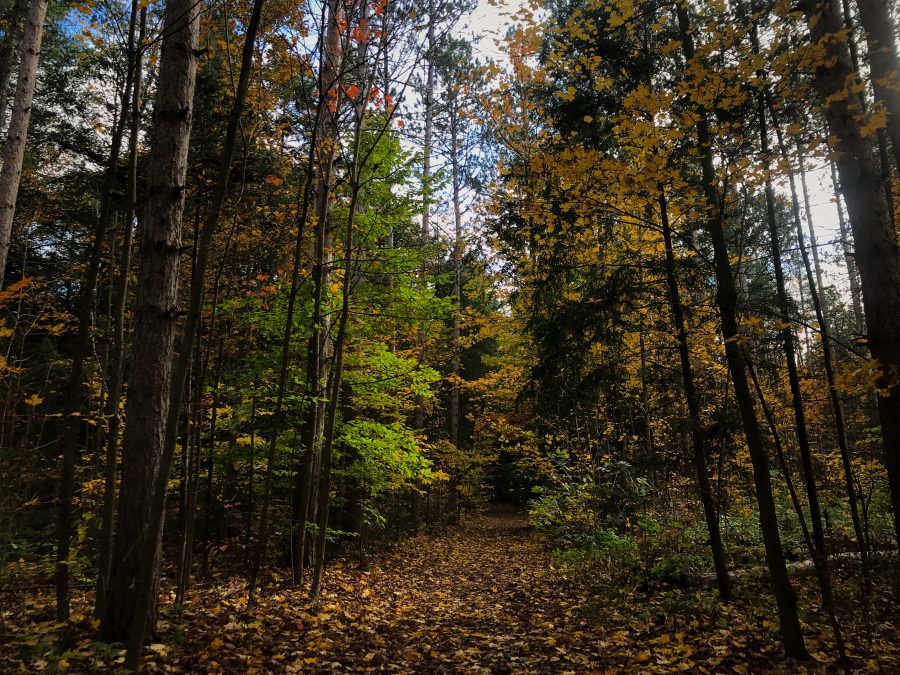Autumn came differently this year. Rather than a harmony of yellows and reds, I was privy to the pacing of each individual tree. While many had already shed their gown, quite a few chose to retain their leaves with some even maintaining the green splendour. Amidst those changes, a world that I had forgotten revealed itself to me once again. The world of the small: moss, lichen, fungus, even snails and lycophytes. Armed with Robin Wall Kimmerer’s prose, I was inspired to walk the woods on all fours.
Many moons ago I undertook studies in this eclectic science programme that consisted of courses in zoology, botany, entomology, and mycology, amongst others. It was fascinating though I had zero skills for it. But I remember loving plant identification the most. It’s such a cool thing to look around and be able to name what we see. In having a name for something, we acknowledge its existence. We see more clearly as RWK would say. But more than that, naming is also to acknowledge the potential influence that something has on our lives. And at times we may even be able to diminish its power over us.
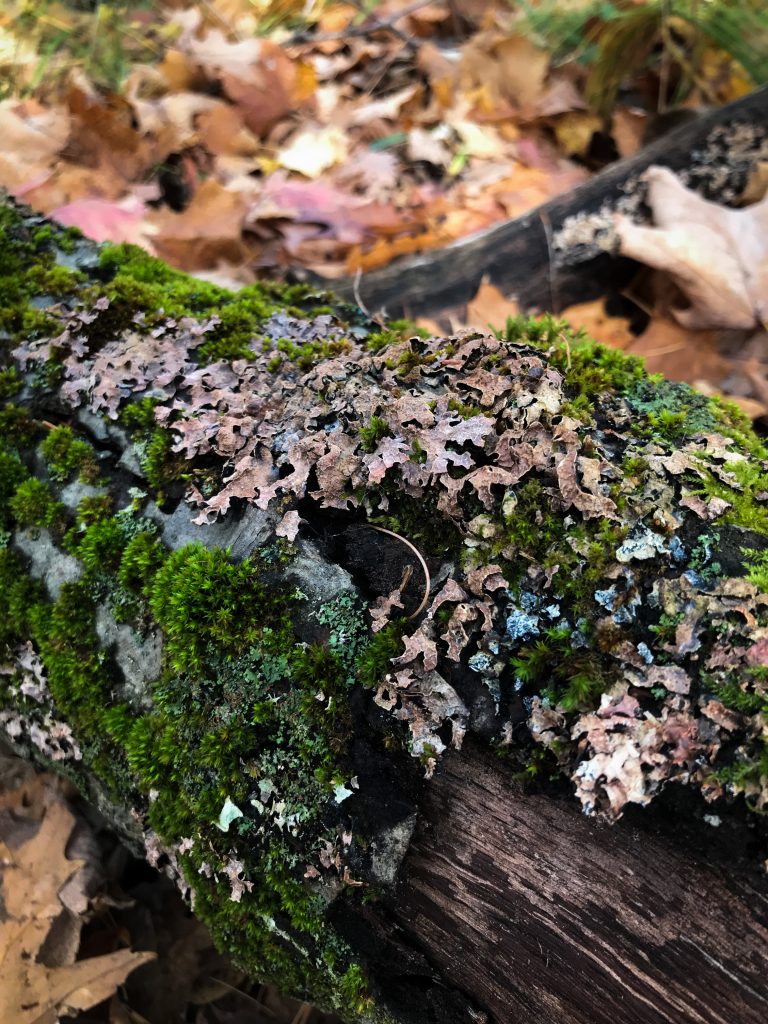
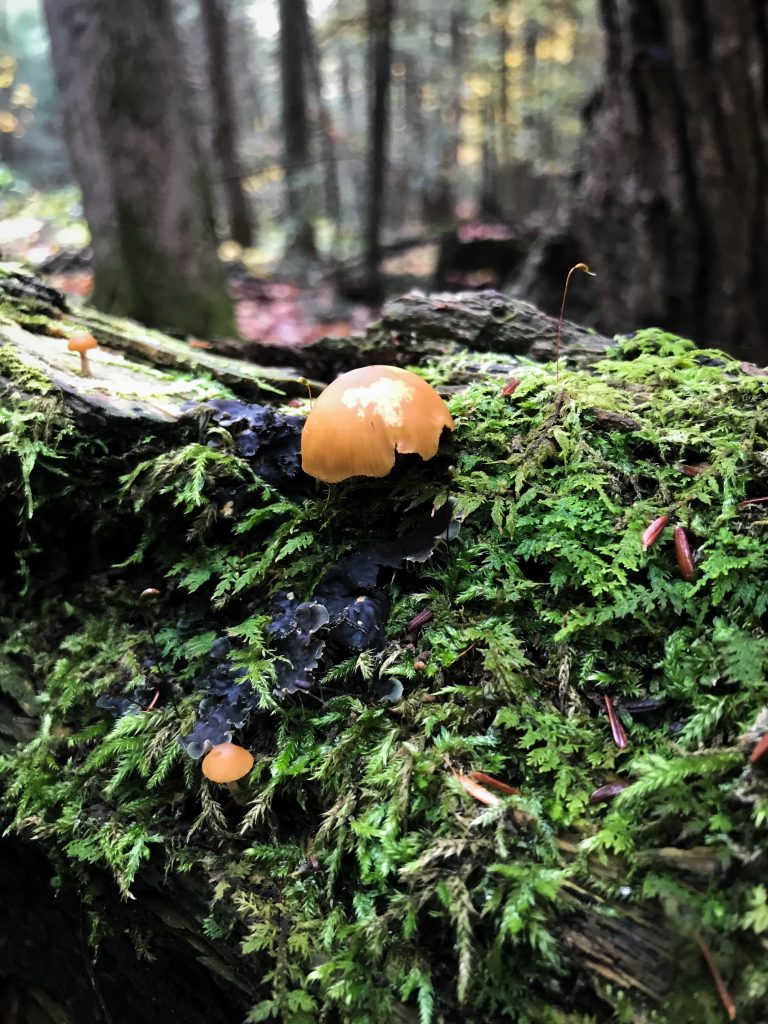
And thus, while I was busy crawling my way through the forest floor, the search for the unnoticed also led to the excavation of those parts of me buried deep in the landscape within. On occasion, I’ve noticed myself reacting strongly to situations or people that do not warrant such levels of passionate aggressiveness. With yoga I’ve learnt to observe those incoherent expressions of “me,” but I wasn’t able to name them. There is a saying from Lao Tzu that goes like this: “When the student is ready, the teacher will appear.” I suppose I only became ready in this Autumn of my life, in this particular liminal moment, in a place that some peoples refer to as Turtle Island. Autumn here is so incredibly unique with vistas of colours and the growing scent of decaying earth. It was during this season of transformation that several teachers appeared.
One in particular taught me the intricate relationship between the fragmented parts of soul and those unpleasant childhood memories that are frozen in the various sheaths (koshas) of the Self. These are the experiences that, although mundane to our eyes, were traumatic back then and eventually developed into feelings of unworthiness, blaming, self-victimisation, etc. In the past, when confronting those experiences, my approach had been to forgive and forget, as I was taught elsewhere. But this didn’t work for me, because “forgetting” is not possible. Those same trauma packets from childhood often got triggered again, especially when I felt most vulnerable (tired, ungrounded, stressed, etc.) and my reactions were usually rather ungraceful. An important lesson I learnt is this:
[H]ealing is not about perfection, but recovery time… How quickly can you move out of fear and back into awareness, in the Heart? […] This level of resilience and recovery is what allows us to avoid self-sabotage, patterns of guilt, shame, self-punishment, or judgment—none of which are valuable if the goal is recovery time (Beekman, 2021, p. 224).
Rather than attempting to remain stoically unaffected when triggered (which has never happened), I’m working on being able to return to homeostasis quickly. Once I spent an entire day fuming over an irksome conversation that triggered all the right trauma packets. I had no control over myself and was rapidly overtaken by that growing “thing” that generated all kinds of thoughts, emotions, and physical reactions. It became very exhausting very fast. I’m finally able to name those specific trauma packets and the waves they create in the different koshas. And I can also recognise when others around me are triggered, when they go batshit crazy for no apparent reason.
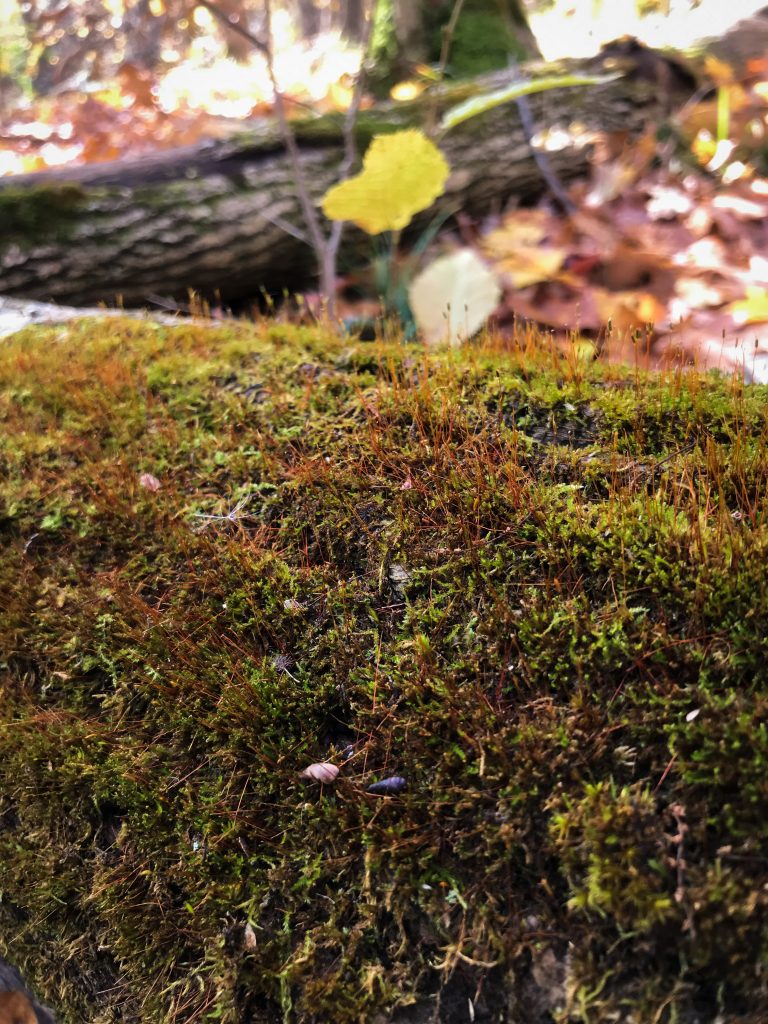
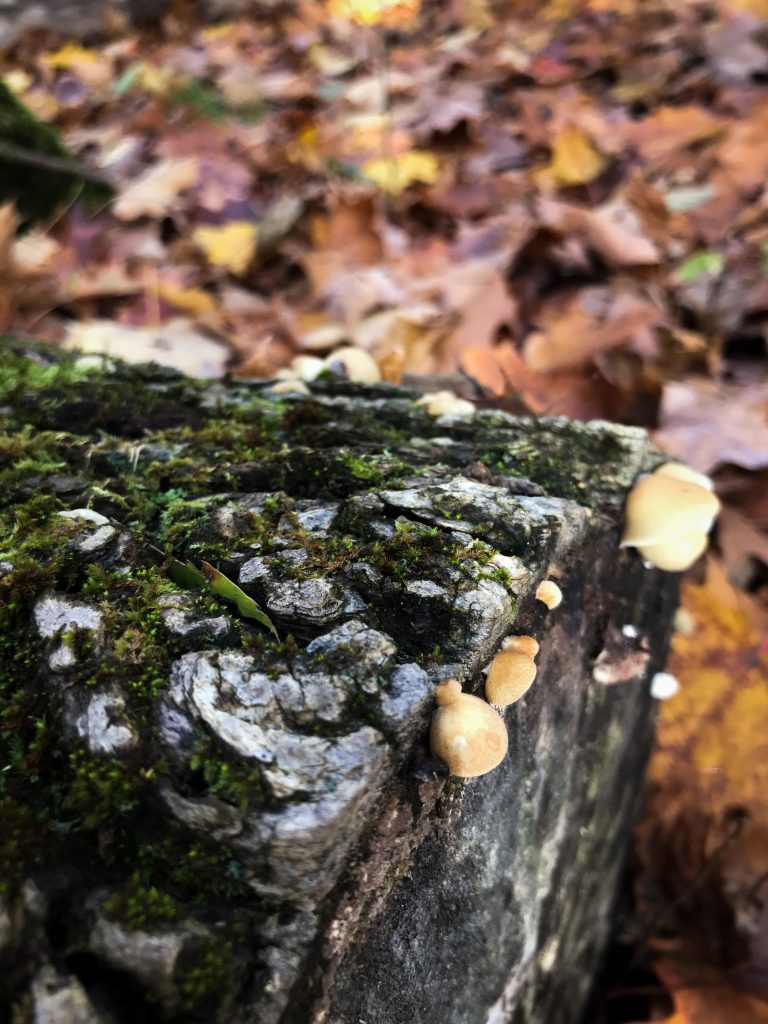
Learning to see mosses is more like listening than looking. A cursory glance will not do it. Straining to hear a faraway voice or catch a nuance in the quiet subtext of a conversation requires attentiveness, a filtering of all the noise, to catch the music. Mosses are not elevator music; they are the intertwined threads of a Beethoven quartet. You can look at mosses the way you can listen deeply to water running over rocks. The soothing sound of a stream has many voices, the soothing green of mosses likewise (Wall Kimmerer, 2003, pp. 10-11).
The first time I read this passage from RWK, I felt puzzled. If I were looking for moss, should I not be squatting with a magnifying class? But when I did enter the woods with the intention of gathering moss (in photos), I finally understood what was meant. There is a stillness that is required in order to listen to the story of moss unfold through time. Only then can we notice how different colonies live intertwined in each other’s structures, how the morning dew brings to life the challenges of reproduction, how the release of carbon dioxide from neighbouring fungi at work make photosynthesis possible… Everything is so subtle; even the air is perfectly still at the height of moss. And to me the same can be said of trauma with a small t. A filtering of all the noise is required in order to hear the muffled melodies of our inner child in distress. This is the katabasis that I’m undertaking to gather the me’s I have exiled in the shadowy depths.
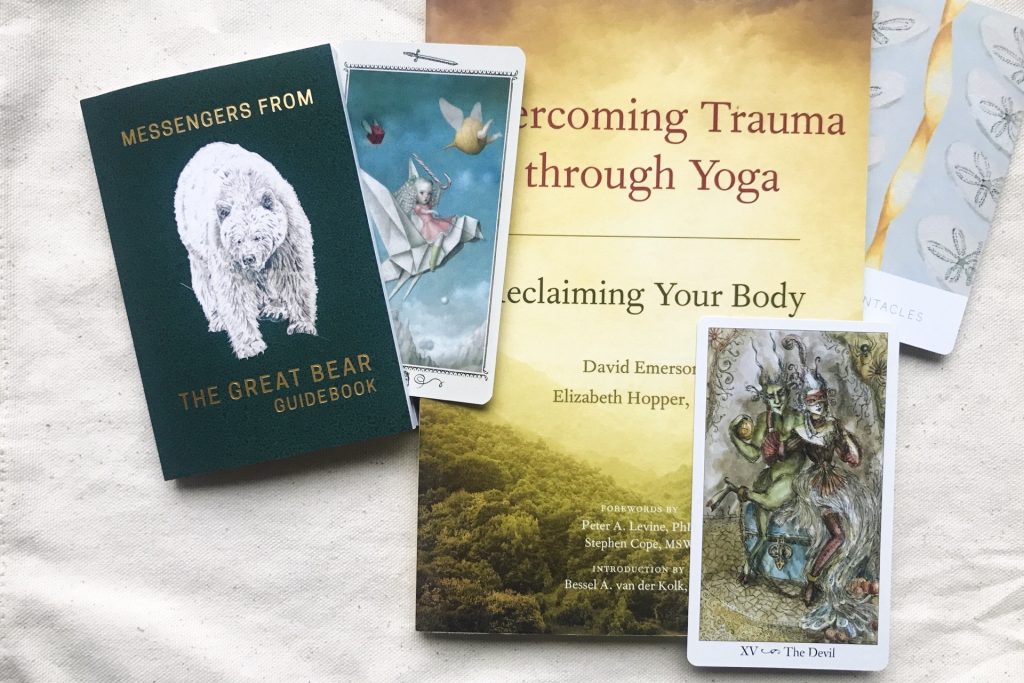
A few decks and books helped to support my descent into the underworld: The Paulina Tarot beautifully portrayed the dizzying movements of vata and featured the whimsical protagonists of childhood fantasies, a perfect playground for my inner child. The Great Bear oracle on the other hand spoke to the wisdom of nature on Turtle Island. It provided that slow steady kapha energy that held this work together. I also looked at the Nicoletta Ceccoli Tarot for those frozen memories of trauma that I wanted to work with, and the White Sage Tarot indicated which chakra to consider. The teacher in question whose path crossed with mine was Kim Beekman; I worked mainly with Inner Alignment (2021) and am currently reading their second book. I also revisited Emerson’s book on trauma & yoga and immersed myself in RWK’s Gathering Moss.
Featured decks:
Paulina Tarot (Paulina Cassidy/Fae)
Messengers from the Great Bear Oracle (Sarah Hammond, Brenda Holmes)
Nicoletta Ceccoli Tarot (Nicoletta Ceccoli)
White Sage Tarot, indie (Theresa Hutch)
Featured books:
Beekman, K. (2017). Awaken Your Potency: a practical guide to Law of Attraction, Ayurveda & Meditation. Self-Published.
Beekman, K. (2021). Inner Alignment Soul Retrieval for Healing Childhood Trauma: a systematic approach to healing the root cause of anxiety and depression. Self-Published.
Emerson, D., et al. (2011). Overcoming Trauma through Yoga: Reclaiming Your Body. North Atlantic Books.
Wall Kimmerer, R. (2003). Gathering Moss: A Natural and Cultural History of Mosses. Oregon State University Press.
